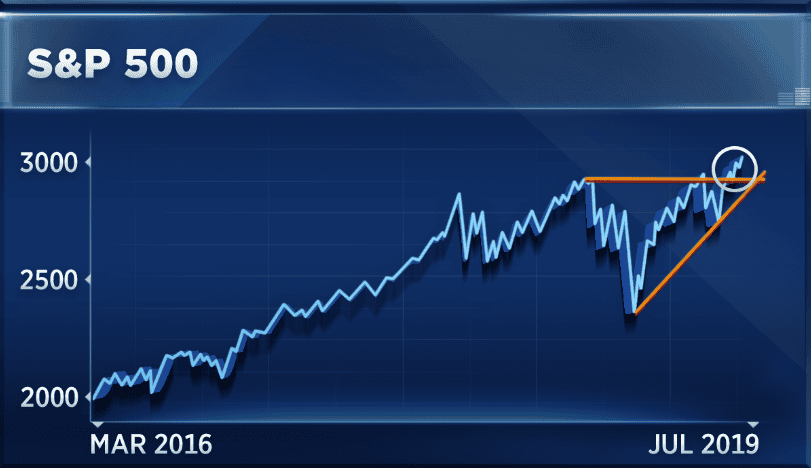
One key pattern could be about to power stocks higher.
The ascending triangle has been popping up in various charts across the U.S. stock market, including in the S&P 500 index, according to Matt Maley, Miller Tabak’s chief market strategist with a penchant for technical charts.
“This is something you frequently see either in a stock or in an index or both that shows that investors are cautiously optimistic,” he said Tuesday on CNBC’s “Trading Nation.” “In other words, they’re willing to buy on any kind of weakness, but they’re not really willing to chase a stock when it moves higher.”
That unwillingness to chase creates a kind of ceiling for the underlying security, which forms the top of the ascending triangle. But once the stock or index is able to push above that ceiling, it creates a new opportunity, Maley said.
“When that stock or index finally breaks above that key level in any kind of meaningful fashion, it shows that the sellers have basically sold what they’re going to sell and it gives you kind of a little bit of an air pocket, and the stock or index can take off,” he said.
That’s the case with the S&P, Maley said, adding that he would like to see the index run to the 3,030 level for confirmation of the rally’s staying power. That would let “investors to go from cautiously optimistic to confidently bullish,” he said.
And that’s not the only place in the market that stands to benefit from this under-the-radar pattern, according to the strategist.
“Look at Cisco. That’s another one that’s broken just slightly above its highs. They don’t report [quarterly earnings] for a little while, but if it gets some more upside follow-through, that will be positive, ” Maley said. “Also, Amazon, which reports this week, … [is] bumping up right against its ascending triangle pattern, so that could be a good catalyst. ”
Mark Tepper, president and CEO of Strategic Wealth Partners, predicted that at least the S&P’s gains would be capped given the market’s overarching expectation that the Federal Reserve will cut interest rates several times over the next 12 months.
“I’m still concerned that back-half [earnings] expectations for this year are still too high,” he said in the same “Trading Nation” interview. “I’m just not sure how much more valuation can continue to carry the S&P higher given that four rate cuts over the course of the next year are already being priced in.”
However, Tepper did see more upside for some individual names, including Amazon and Cisco.
“We love Amazon. I mean, it’s easy to see 20 to 25% upside from here over the next year. The valuation’s extremely compelling for the amount of growth you’re getting, and their competitive advantage on the retail side is extremely strong,” Tepper said. “What you’re getting [with Cisco] is … an above-market yield, you’re getting some decent growth. It is expensive compared to its historical multiple, but they’re in the early stages of transforming that business towards a healthier mix of software and recurring revenues, which we like.”
All in all, if you ask Maley, what everybody’s looking for in the market right now might not be the most strategic thing for investors to be watching.
“Right now, we’re in a situation where everybody’s looking at the earnings reports,” he said. “If we can get through that earnings season unscathed — which is a big if — that’s going to be very positive, because if these things can move a little bit higher, the momentum could really get behind the entire market.”
